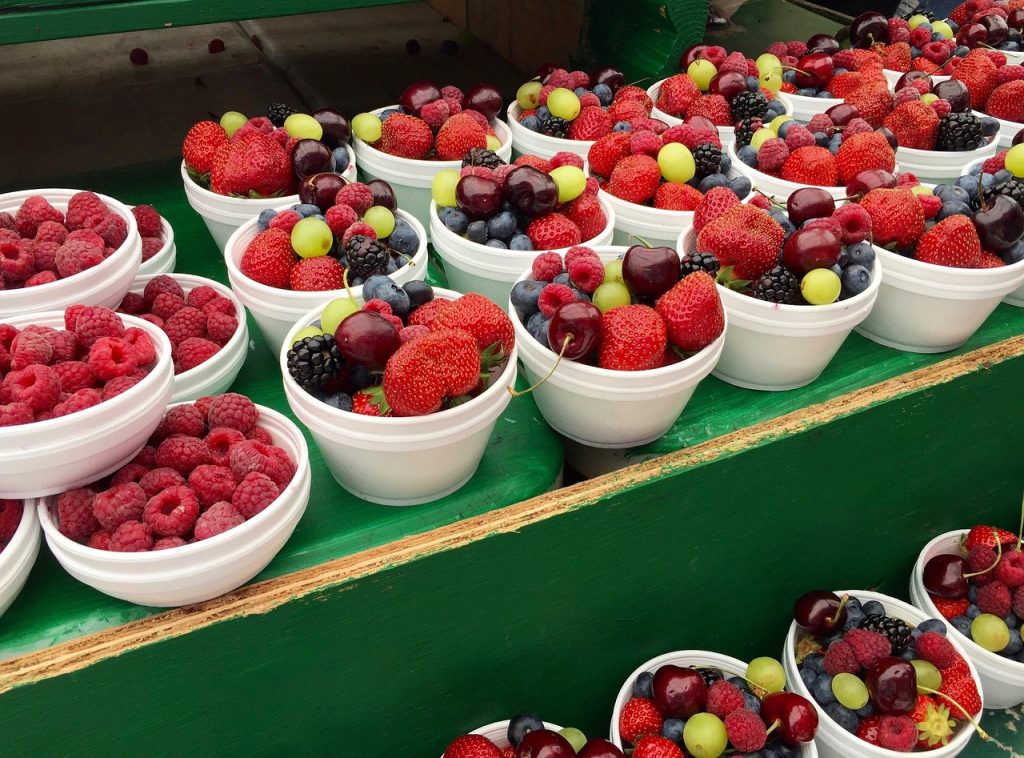If you want to start eating less meat, a great option is introducing plant-based meals into your diet. You don’t have to go cold turkey; you can start by eliminating one type of meat at a time, or start with traditions like “Meatless Mondays.” Consider the following options when addressing your plan for a more plant-based diet.
Plant-Based Vegan
An entirely vegan plant-based diet includes plant foods only. People consume no animal foods whatsoever on a completely vegan diet, including even honey, milk/dairy, and eggs. Instead, only whole grains, legumes (fruit/seed of a Fabaceae plant), and all fruits/vegetables are eaten.
Plant-Based Vegetarian
Plant-based vegetarian diets focus on plant foods as the core elements for nutritional intake. Whole grains, all fruits/vegetables, and legumes are consumable in this diet. Dairy products and eggs are also included in a plant-based vegetarian diet.
Plant-Based Pescatarian
A pescatarian plant-based diet includes many foods like a vegetarian diet plan. All fruits and vegetables, whole grains, and legumes are consumable in a pescatarian diet, as are seeds/nuts. The primary difference between a vegetarian and pescatarian diet is that a pescatarian plant-based diet also includes various seafood items, such as tilapia, salmon, shellfish, tuna, and more.
Plant-Based Omnivore
It might seem unorthodox or unfitting, but certain omnivore diets are capable of plant-based categorization. A plant-based omnivore diet is still centered on plant foods such as fruits, vegetables, legumes, and various other plant-based foods. However, limited seafood and meat foods are also included. One example of a plant-based omnivore diet is the Mediterranean diet, in which poultry and fish are consumed significantly more than red meats, and olive oil is used as the main source of fat.
Plant-Based Affordability
With smart shopping and attention to detail, you can easily be plant-based on a budget. The main factor is to focus on whole foods that are nutritious and can be bought in bulk such as beans, lentils, rice, oats, pasta, and seasonal vegetables. Not only can these be affordable when purchasing groceries, they are also highly versatile and can be used in many different meals. Stores such as Costco or Sam’s Club are perfect for these things because of the ability to buy in excess. Buying canned or frozen vegetables can be economically beneficial since they reduce the amount of food waste someone can accumulate.
In addition, meal planning can be a great money-saver for those wanting to consider a more plant-based diet. Mapping our your meals and making a list of the exact things you need to get from the grocery store can avoid impulse buying or over-buying. Also, if you avoid buying the vegan meat and dairy substitutes, that can keep your grocery bill low since they tend to be more expensive and not necessary for a full-balanced diet. A popular way to use “meats” in your meals is by making the replacements yourself. You can consider using tofu, lentils, or beans in place of faux meats, make your own plant milk, or try nutritional yeast for a cheesy addition. Popular foods to replace meat are cauliflower for “wings,” tofu for a variety of different meats, or tempeh.
Eating out less is an easy way to save money when turning to a plant-based diet. This is an easy and fast fix, and you should be able to tell the difference on your wallet pretty quickly. Meal planning can be a great start to the process, and you can easily freeze the extra amount. Making simple recipes can save money and time, so consider stir-fries, pasta dishes, grain bowls, and simple sandwiches. Discount grocery stores and local markets can help you save money as well as ensure you are purchasing quality, clean ingredients.
What to Avoid When Going Plant-Based
Cut out prepared meals: You may be tempted to purchase prepared meals when going plant-based because you’re not sure what to do, but this would be the more costly approach. You can buy a vegan pizza for $8, or you can buy your own ingredients and make one yourself for less than half that price. Plant-based prepared meals may be surprisingly delicious, but they could also include a lot of ingredients you may not necessarily think to be harmful, such as excess oils and fats.
Plant Based Diet Commonalities
Despite all the diversity available, common threads between the varieties of plant-based diets do exist. What do all plant-based diets have in common? Three main aspects comprise the requirements necessary to qualify a diet as plant-based. All plant-based diets are comprised either entirely or mostly of plant foods with limited or no animal foods included. Plant-based diets consist of whole foods, which means the foods are not highly processed products and are in as natural a state as possible when consumed. Finally, every plant-based diet variation does not contain any refined sugars or chemical-based additives.
Benefits
Benefits associated with eating only plant-based foods are plentiful, which is a primary reason this type of diet is so popular today. Eating less red meat helps lower levels of cholesterol and the potential for heart-related health issues. Temporarily leaving the realm of personal benefits, the benefits provided to the global environment from increased plant-based food consumption are monumental. Natural and whole foods have significantly less impact on the environment than do meat-processing plants and cattle farms. The local, regional, national, and global environment is collectively spared from more pollution and chemical/waste product absorption when people eat more plant-based foods.
Plant-based diets also help increase your daily energy levels. Losing weight and keeping it off you are also easier when consuming a plant-based diet. Do you want to live a healthier lifestyle and also live longer? Plant-based diets are known to help reduce the risks and/or effects of certain cancers, heart disease, inflammation, type-2 diabetes, and more.






